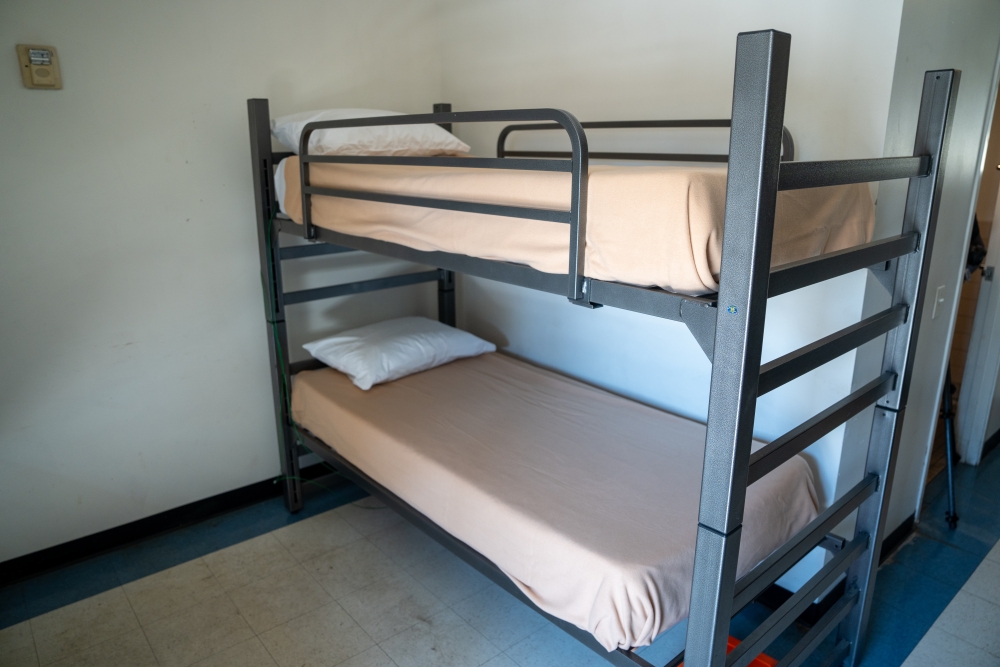Mayor Gloria Bringing Forward New Locations for Potential Homeless Shelters
City staff evaluated properties, including sites submitted by property owners, City Council members, and the Independent Budget Analyst

In order to continue helping people get off the streets and onto the path to stable housing, the City of San Diego will present several potential sites to the City Council for their consideration today, Feb. 10. This follows an initial review of properties submitted to the City’s Homelessness Strategies and Solutions Department (HSSD) and San Diego Housing Commission (SDHC) by property owners or managers, along with site suggestions from City Councilmembers and the City’s Independent Budget Analyst.
“We’ve identified several key sites that can serve as permanent shelters, including two already owned by the City, and I urge the City Council to authorize us to take the next steps in order to help more people off the street,” said Mayor Todd Gloria. “Data clearly show our work to reduce homelessness is turning the tide, but we need more space for people to go. It is my hope the City Council will join me in meeting this moment with the decisiveness and urgency it demands.”
With a goal of increasing long-term capacity in the City’s shelter system, the City issued a formal solicitation in September 2024 calling on property owners and managers to offer up potential locations that could be used as future shelter sites. As outlined in the Comprehensive Shelter Strategy, many of the City’s current shelter sites are temporary in nature, due to various site restrictions and future redevelopment plans.
Of the locations being proposed as long-term shelter options, two are City-owned properties and one is a privately owned commercial property. All three options would require site modifications and building improvements to be transformed into shelter space. The three options set to be presented to the City Council on Monday are:
· 1222 First Avenue: The current City Operations Building, which will no longer be occupied by City workers as of this spring. The site includes five floors, totaling approximately 217,000 square feet. Refurbishment costs are estimated at $45.2 million.
· 820 E Street: The former Central Library building, which is currently vacant. The site includes 5 floors, with approximately 150,000 square feet. Refurbishment costs are estimated at $86.8 million.
· 2nd Avenue property: A privately owned, mixed-use space offering approximately 25,000 square feet. The address is being withheld given the potential for future negotiations. Its refurbishment costs are still undetermined.
Last July, City staff presented a proposed lease agreement for a large, long-term-use shelter on Kettner Boulevard in Middletown. After a year of negotiations, it was determined that the proposal could no longer advance and these three options would be presented to the City Council as alternatives.
Additionally, the City plans to nearly double the Safe Parking Program this spring with a new lot expected to open on Harbor Drive near San Diego International Airport. Next week, the City will also move forward with the Catholic Charities Diocese of San Diego on a proposal for a semi-congregate facility that has space for up to 210 beds. This added space will create additional opportunities for families, seniors and women while offsetting the loss of 40 beds that are coming offline due to building redevelopment at a smaller City-funded shelter operated by Catholic Charities downtown. The SDHC board will vote on the proposal Friday, Feb. 14.
Currently, the City funds 1,630 traditional shelter beds and up to 770 tent spaces in the Safe Sleeping Program. Under the Comprehensive Shelter Strategy, the City committed to identifying a permanent shelter location, as the continual relocation of existing shelters increases costs in the long term. In order to replace beds that came offline for various reasons, the City followed a Short-Term Action Plan adding 263 beds across three new facilities.
Under Mayor Gloria’s administration, the City of San Diego has done more to address homelessness than during any time in the City’s history.
To help inform decisions and future shelter site planning, HSSD and SDHC staff have been conducting listening sessions since late last year with homelessness service providers and people with lived experience, including those currently staying in City-funded shelters.
“Feedback we’ve heard and best practices suggest that shelter stability is key for individuals receiving services, and it ultimately creates future certainty for the City’s homelessness response,” said Sarah Jarman, Director of the City’s Homelessness Strategies and Solutions Department. “The City, in partnership with the Housing Commission, will continue these listening sessions, where critical input helps guide the City’s plans and decisions on homelessness.”
Timeline of Shelter Actions:
August 2024 – City formally requests City Council and Office of the Independent Budget Analyst to submit properties that could be used for shelters.
September 2024 – City issues formal solicitation for property to be used for shelter.
September 2024 – City and SDHC present Short-term Action Plan, requested by Councilmembers, to address temporary shelter facilities closing.
October 2024 – Expansion of 230 tent spaces at Safe Sleeping Program begins under Short-Term Action Plan.
November/December 2024 – 263 beds added to City’s sheltering system under Short-Term Action Plan. This includes 40 beds for veterans and 130 beds for adults and seniors at Veterans Village of San Diego, 56 beds focused on those with alcohol substance abuse operated by TURN Behavioral Health Services and 37 beds at the South County Lighthouse shelter operated by the San Diego Rescue Mission.
February 2025 – City staff return to Council after reviewing submitted shelter sites.
